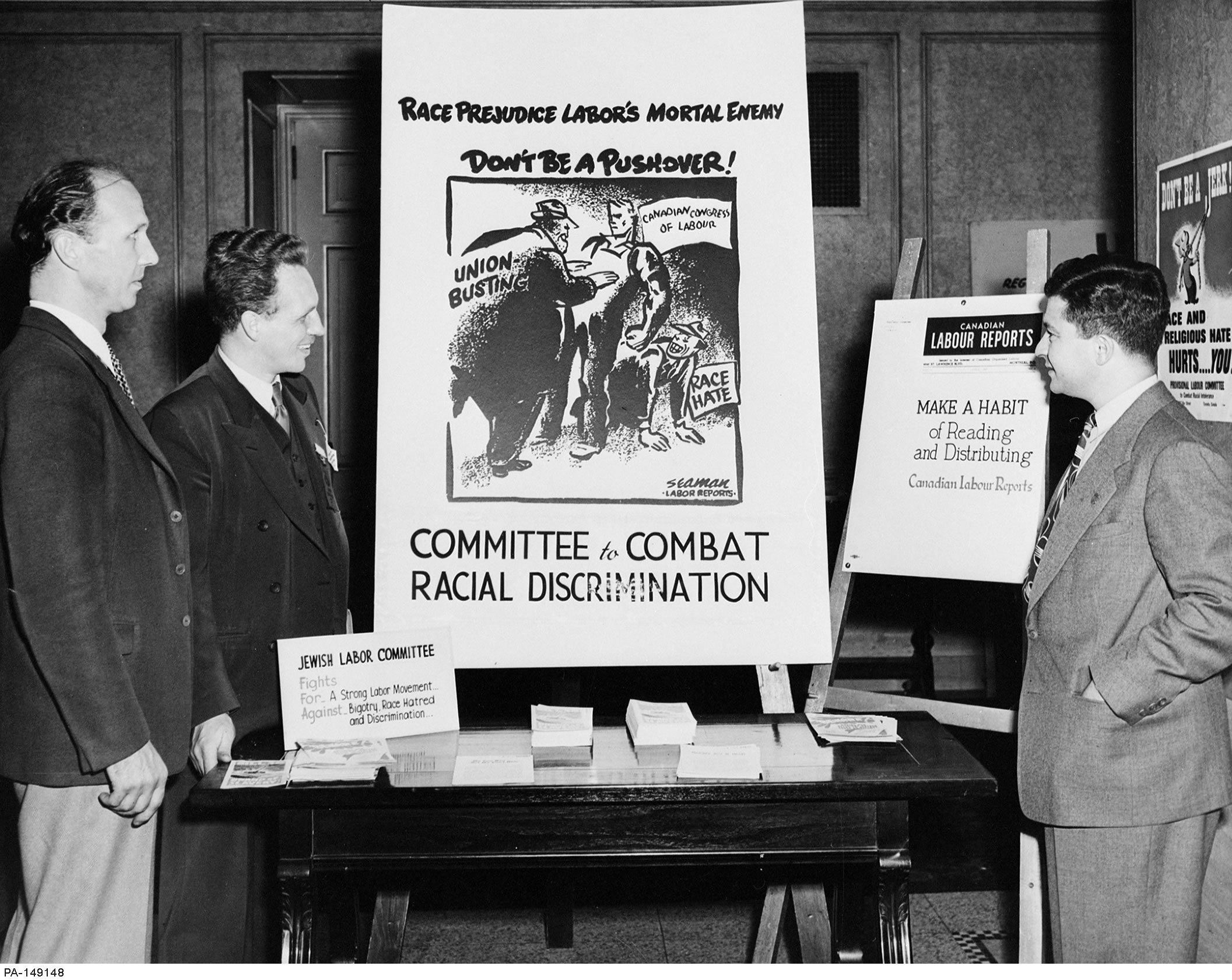Association for Civil Liberties
By the 1950s, most of the rights associations that had arisen during the 1930s and 1940s were largely inactive or defunct. The Vancouver branch of the Canadian Civil Liberties Union, Civil Liberties Association of Winnipeg, Ottawa Civil Liberties Association, and Montreal Civil Liberties Association had quickly dissolved. The Association for Civil Liberties (ACL) had been formed in 1949 by members of the Civil Liberties Association of Toronto (CLAT) who were eager to create a national civil liberties association headquartered in Toronto. Among its leaders were Toronto lawyers Irving Himel and Andrew Brewin (a future New Democratic Party MP), as well as B.K. Sandwell (editor of Saturday Night) and Charles Millard of the United Steelworkers of America. They devoted most of their energy to combating restrictive covenants, censorship, and police powers while agitating for provincial fair employment practices legislation and a bill of rights. Sandwell, Himel, and Brewin were also responsible for creating the Committee for a Bill of Rights in 1946 as an adjunct to the CLAT. In that year, the committee presented the minister of justice with a petition, signed by two hundred “respectable” Canadians, calling for a bill of rights; and in 1951, it organized a delegation to Prime Minister St. Laurent that represented two hundred people and fifty organizations.
According to Ross Lambertson in Repression and Resistance (page 316),
“As many as 300 people turned up at the founding meeting of the ACL, which chose as its first chair R.S.K. Seeley, the Provost and Vice-Chancellor of Trinity College. Like its antecedent, the ACL was a ‘respectable’ organization with many CCF members but with liberals to give it a non-partisan cast. The chair of its committee for a bill of rights was B.K. Sandwell, and several of the vice-presidents were well-known either as human rights activists or members of the political/legal/intellectual elite: Rabbi Feinberg, Charles Millard, Malcolm Wallace, Joseph Sedgwick, Harold M. Cassidy, and Mrs. W.L. Grad. In addition, the organization’s first treasurer was W.P. Jenkins, a Unitarian Minister, and its Council included several other well-known noncommunist members of the Canadian human rights policy community, including Andrew Brewin, James Finlay, George Tatham, E. Corbett, and George Tanaka, as well as the Liberal MP David Croll and a number of CCF politicians: E.B. Joliffe, Eamon Park, and Lloyd Fell.”
ACL members were not allowed to belong to any other civil liberties association, a requirement that was designed to exclude communists. Civil liberties advocates were bitterly divided during this period between communists and social democrats/liberals. The latter led the ACL, whereas communists formed the League for Democratic Rights, which functioned as a rival national civil liberties association. By the late 1950s, the ACL was essentially defunct, except for the occasional pronouncement from Toronto lawyer Irving Himel, who played a small role in the formation of the Canadian Civil Liberties Association in 1964.
Further Reading
Lambertson, Ross. Repression and Resistance: Canadian Human Rights Activists, 1930-1960. Toronto: University of Toronto Press, 2005.
Archives
There is no single archival collection for the ACL. However, material is available in the June Callwood Papers at Library and Archives Canada. See also the J. King Gordon Papers, the Arthur Roebuck Papers, and the Frank Scott Papers (all at Library and Archives Canada).
 Site Resources
Site Resources-
- Any use of material or referencing content from HistoryOfRights.ca should be acknowledged by the User and cited as follows:
–
- Clément, Dominique. “page title or document title.” Canada’s Human Rights History. www.HistoryOfRights.ca (date accessed).


 Encyclopaedia
Encyclopaedia 
 © 2024 COPYRIGHT CLÉMENT CONSULTING. ALL RIGHTS RESERVED.
DEPARTMENT OF SOCIOLOGY, UNIVERSITY OF ALBERTA
© 2024 COPYRIGHT CLÉMENT CONSULTING. ALL RIGHTS RESERVED.
DEPARTMENT OF SOCIOLOGY, UNIVERSITY OF ALBERTA